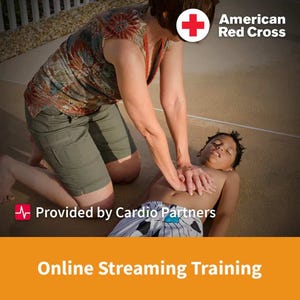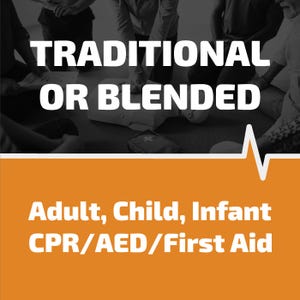Training Your Staff to Use an AED: What You Need to Know
- May 17, 2023

According to the American Heart Association (AHA), there are more than 10,000 sudden cardiac arrest incidents that occur annually in the workplace.2 Automated external defibrillators (AEDS) can be a lifesaving tool to keep on-site, but they can only be effective if employees know where to find them and how to use them properly. After a survey was taken by AHA, 51% of employees were found NOT to know where their workplace kept an AED if they had one.2


Why is AED Training Important?
The sooner an AED can be used, the greater the chances of survival for the victim. For every minute that passes without defibrillation, the chances of survival decrease by 7-10%.1 Having staff members who are trained to react quickly and use an AED effectively can shorten the time it takes to get an AED to the victim and continue the rescue process.
It is also important to remember that some states require employees to be trained in AED/CPR use. Failing to meet these requirements can result in fines or legal liability in the event of an emergency.
Where is AED Training Required?
Depending on the state and industry, there may be specific state laws and regulations that require certain businesses and organizations to have AEDs and trained personnel on-site. Failure to comply with requirements can result in legal action, fines, and other penalties. Additionally, not properly maintaining and managing AEDs can lead to malfunctions and potential liability in the event an emergency does occur.
It is important for businesses and organizations to be aware of the legal requirements in their state and industry, so they can take the necessary steps to comply with them. For more information on AED laws and regulations, check out our AED legislation pages under the resources tab.
Who Should be Trained in AED Usage?
Regardless of their role or responsibilities, all staff are recommended to be trained in AED use. AEDs can be used by anyone, regardless of their medical training or background. Having all staff members trained ensures that there will be multiple people on site who can respond quickly in an emergency, increasing the chances of survival for the victim.
What Should the Employee AED Training Cover?
Training on how to use an AED should cover the basics of AED use, as well as cardiopulmonary resuscitation (CPR) emergency response protocols. The training should be designed to give staff members the confidence and skills they need to respond quickly and effectively in an emergency.
Key elements of AED training for staff should include:
- Identifying the signs and symptoms of sudden cardiac arrest
- Activating the emergency response system
- Performing CPR
- Proper use of an AED, including pad placement and operation
- Basic first-aid skills


How Can Employers Ensure Staff Receives Effective Training?
Investing in AED/CPR/First Aid training courses can improve safety in the workplace, comply with legal requirements, and provide staff members with valuable professional development opportunities. Not only should these courses include the key elements training should cover, but if state laws require CPR/AED training in an employer’s industry, then it’s important to opt for certified CPR/AED/First Aid courses that give digital or paper certificates for staff members to prove their certification for legal reasoning.
Refresher courses should also be held at least annually to not only ensure compliance with state laws or legal requirements but to ensure that staff members are up-to-date on the latest AED technology and protocols.


Top Recommended AED Training Courses
Online, virtual, or onsite training and annual upkeep with refresher courses can help confirm staff members are confident in their ability to respond to an emergency and can perform the necessary skills correctly. These courses each have a different learning style and preference so employers can find which course is best suited for their staff.
- Online courses are self-paced and can be completed from anywhere as long as the student has access to an internet connection.
- These courses do not meet OSHA requirements and do not fulfill BLS requirements.
- Ideal for employers who don’t require skills check for certification
- Virtual courses are live, instructor-led courses that are conducted online, allowing for real-time interaction with the instructor and other participants.
- These courses are accredited meaning they do meet OSHA & workplace requirements.
- Ideal for healthcare workers, law enforcement, manufacturing, utilities, and childcare industries that may require certification in their workplace but need the flexibility to take the course in their own time place.
- Traditional courses are conducted in person, either on-site or at a training center.
- These courses are accredited and meet OSHA requirements, but do NOT meet BLS requirements.
- Ideal for groups as each course has a minimum of 8 students required
Each course has its own unique benefits. Choosing the right course depends on a company’s individual learning needs and preferences.
Investing in AED training for your staff can make a difference in an emergency. Make sure your team is prepared to respond quickly and confidently by providing them with the training and tools they need to use an AED effectively. Learn more about the online, virtual, or traditional/blended courses we offer today.
Related Article: Who Needs CPR Training?
References
1 American Heart Association. (2018). American Heart Association CPR & First Aid. American Heart Association. Retrieved May 4, 2023, from https://cpr.heart.org/-/media/CPR-Files/Training-Programs/AED-Implementation/2022-updates/AED-Guide-1.pdf
2 American Heart Association. (2018). Implementing an AED program - American Heart Association CPR & First Aid. American Heart Association. Retrieved May 4, 2023, from https://cpr.heart.org/-/media/cpr-files/training-programs/aed-implementation/implementing-an-aed-program-ucm_501521.pdf?la=en







 CALL US:
CALL US: